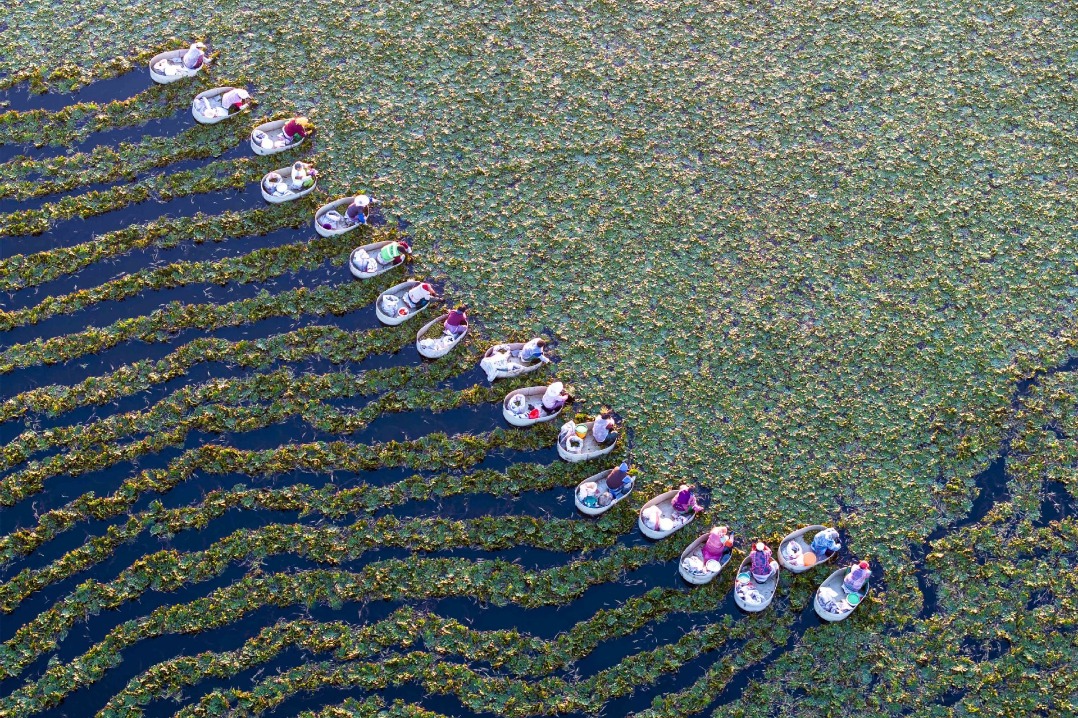The way ahead for fishery cooperation in the South China Sea


Fishery stocks are resources of wildlife with limited capacity of replenishment. The sustainable use of these resources requires management regimes to be science-based and well enforced, and uncertainties should be taken into account. Generally, international law including UNCLOS has provided legal basis for such cooperation. Among them, one is that states bordering an enclosed or semi-enclosed sea should cooperate with each other in the exercise of their rights and in the performance of their duties to coordinate the management, conservation, exploration and exploitation of the living resources of the sea. Another is that before maritime delimitation disputes have been settled, the states concerned, in a spirit of understanding and cooperation, shall make every effort to enter into provisional arrangements of a practical nature including joint development.
According to the estimates of the Food and Agriculture Organization, about 90 percent of the world's economic fish stocks have been overexploited, and the proportion of fish stocks at a biologically sustainable level has dropped from 90 percent to 65 percent in the past 50 years. More than a third of fish stocks are fished in unsustainable conditions. As one of the centers of marine biodiversity in the world, the South China Sea has a variety of typical ecosystems such as mangroves, coral reefs, seagrass beds, coastal wetlands. There are more than 970 species of macrobenthos and more than 2,300 species of fishery resources. The South China Sea is one of the five most productive fishing areas in the world, and marine fishery is an important industry in countries and regions around it. The fish catch in the South China Sea accounts for about 12 percent of the global total, and it is an important source of protein for about 300 million people in the coastal countries.
According to the estimates of the Chinese fishery departments, the density of fishery resources in the shallow sea area of the South China Sea in recent years is about 0.3 tons per square kilometer, which is only one-twentieth of the original resource density. The direct causes for the declining fish stocks are excessive fishing intensity and destructive fishing methods. At the same time, indirect factors such as climate change and habitat destruction should also be taken seriously. From the perspective of policy and fisheries governance, these issues reflect that before the settlement of disputes over territorial sovereignty and maritime delimitation, the parties concerned still have a long way to go in science-based decision-making, consideration of uncertainties, and cooperation in fisheries governance.
Science-based fisheries policy
"Science-based fisheries policy" is the key to modern fisheries management. In order to ensure that all fishery resource conservation programs are based on the best available scientific information, most regional fishery organizations have established their own scientific committees. Members of the committee as a decision-making body are basically composed of diplomats and fishery managers, while members of the scientific committee as a supporting institute are composed of scientists and researchers.
The scientific data obtained through systematic resource assessment methods are the basis for determining the total allowable catch of fishery resources. The data includes fishing time, location, species, and catch volume, provided by fishing vessels. However, in applying this method of information collection, the littoral states of the South China Sea are facing two problems.
Catch logs are the most important primary source of fishery data. The real fishing log should be able to reflect the daily operation process and fishing results of the vessel. Different from deep-sea fishing, affected by territorial sovereignty and maritime jurisdiction disputes, as well as traditional fishing habits of fishermen, in the South China Sea, not all of the fishing logs of the vessels from the coastal countries are complete and accurate, and many fishing vessels do not even have fishing logs. Therefore, there are many uncertainties caused by human factors in determining the total allowable catch of fishery resources through fishing logs.
The second problem is that the newly-developed information technology has not been fully applied to the management of fishing vessels in the South China Sea. In most cases, the data of the fishing vessel monitoring system of the coastal states are not shared, and not all the coastal states of the South China Sea have the data of all their fishing vessels. It is also common for fishing vessels to turn off their automatic identification systems transponders while fishing illegally. Although some countries and fishery management organizations have begun to introduce satellite photos and images to estimate the fishing intensity in practice, this method has a very limited role in obtaining the total allowable catch of fishery resources.
What can the coastal states do?
"Science-based fisheries management" can bring some enlightenment to the coastal states. Fishery cooperation in the South China Sea does not necessarily have to start with the coastal state cooperation mechanism or the fishery cooperation mechanism, but can start with the fishery science committee, which is more technical and less sensitive.
Relevant countries can first discuss and explore the establishment of an intergovernmental fishery scientific committee. The aim of the committee is to organize a joint assessment of fishery resources and make recommendations on the total catch, assessment programs, and fishery conservation and management measures. At the beginning, the committee may not play any substantive role in coordinating fishery policies among countries, but it could provide a platform for fisheries scientific cooperation, joint research and information sharing among countries involved.
Since 1999, China has implemented the summer fishing moratorium in the South China Sea for 25 years. This year alone in Hainan province, nearly 17,000 fishing boats and more than 50,000 fishermen were involved. Based on the survey data, we found that this policy has brought out great ecological and economic benefits. First, the quality and structure of fishery resources have been continuously improved, the amount of resources in different water layers of the fishery has increased, and the quality of individual fish has increased significantly. The second is to reduce the number of fishing boats operating trawls, gillnets, which has a more obvious effect on protecting seagrass beds and coral reefs. Third, with the implementation of this policy, Chinese fishermen’s awareness to protect the marine ecological environment and fishery resources has been continuously improved.
For the littoral countries of the South China Sea, the best scenario is to implement a common fishing moratorium policy under the framework of the Fisheries Cooperation Committee. But this faces many obstacles and takes a lot of time to achieve. A realistic and feasible situation is that the relevant countries implement their own fishing moratorium policies in the South China Sea based on the common goal of resource conservation. This approach does not affect the respective maritime claims of the countries concerned, and at the same time can achieve the goal of jointly conserving fishery resources, which is also conducive to gradually creating a good atmosphere for fishery cooperation in the South China Sea.
Some suggestions
First, from the perspective of managing and controlling disputes, although all parties may retain their respective legal positions, they should also reach an understanding, including not violently enforcing the law against fishermen, treating fishermen humanely, and providing timely assistance to fishermen in distress. At the same time, it is necessary to avoid speculation on fishery disputes and prevent the escalation of the situation at sea.
Second, the littoral states of the South China Sea should conduct consultations on the joint investigation of the ecological environment and biological resources and strengthen exchanges and cooperation among scientists from various countries. On this basis, countries can reach an understanding on the joint survey of biological resources in the South China Sea and put it into practice.
Third, based on a comprehensive survey of fishery resources in the South China Sea, relevant countries can coordinate policies on resource conservation and fishery management to create favorable conditions for promoting the joint development of fishery resources. There are two goals for the countries to coordinate their policies: first, conservation and management measures can be adopted and come into effect, thereby the public interests of regional fisheries can be safeguarded; the second is not to have a destructive impact on the livelihood of the fishermen in coastal countries.
Ding Duo is deputy director and associate research fellow, the Research Center for Ocean Law and Policy at the National Institute for South China Sea Studies. Zhong Hui is assistant researcher, the Division of international exchanges at the National Institute for South China Sea Studies; Secretary at the China-Southeast Asia Research Center on the South China Sea.
The opinions expressed here are those of the writer and do not necessarily represent the views of China Daily and China Daily website.
If you have a specific expertise, or would like to share your thought about our stories, then send us your writings at opinion@chinadaily.com.cn, and comment@chinadaily.com.cn.
































